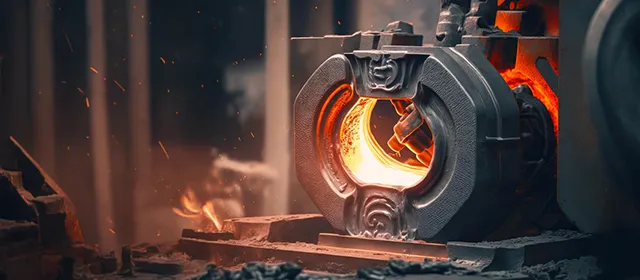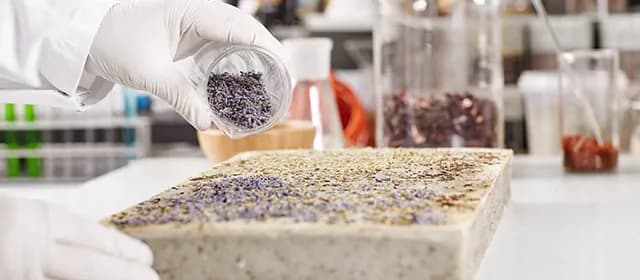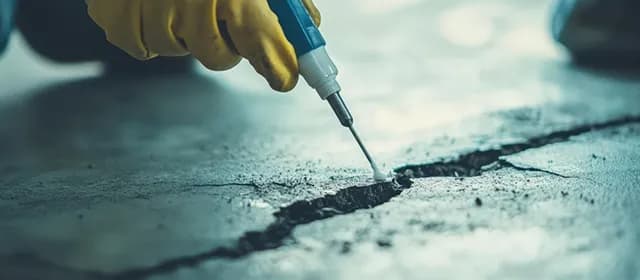In a world where precision, performance, and sustainability define industrial success, die casting has quietly become one of the most powerful tools in modern manufacturing. As per Kings Research, the global die casting market is estimated to generate a valuation of USD 139.95 billion by 2031. From electric vehicles to aerospace systems, this process is now central to how industries create lighter, stronger, and more efficient products.
Walk through any automotive plant today, and you’ll see massive machines pouring molten metal into dies, producing intricate parts in seconds. These components may look simple, but they represent a global shift in how manufacturers think about materials, cost efficiency, and environmental responsibility.
As industries move toward electrification, automation, and sustainability, die casting is no longer just a production method; it’s a strategic enabler of industrial transformation.
What Makes Die Casting So Important to Modern Manufacturing?
Die casting is the process of forcing molten metal, typically aluminum, magnesium, or zinc, into a mold cavity under high pressure. The result is a precise, durable, and dimensionally accurate component that requires little to no machining.
For decades, manufacturers relied on traditional methods like sand or gravity casting. But as production timelines shortened and design complexity grew, die casting became the preferred option. Its ability to deliver high-strength, lightweight, and repeatable parts at scale changed the economics of manufacturing.
In industries such as automotive, aerospace, industrial machinery, and electronics, die casting plays a crucial role. Automakers, for instance, now depend on aluminum die casting to reduce vehicle weight, enhance fuel efficiency, and meet emission norms.
The growing push for electrification and sustainability has elevated the importance of this process even further, especially in the Asia-Pacific region, where industrial expansion continues at a record pace.
Why Is the Automotive Industry Driving the Die Casting Revolution?
The automotive industry has become the largest consumer of die-cast components worldwide, and for good reason. As carmakers face stricter fuel and emission standards, reducing vehicle weight has become a top engineering goal.
According to the U.S. Department of Energy, a 10% reduction in vehicle weight can improve fuel economy by 6–8%. This single insight has reshaped material choices across the entire automotive supply chain.
Lightweight aluminum parts are now replacing traditional steel components in frames, transmissions, and structural systems. The National Academies reports that aluminum’s share in body-in-white and closures will rise from 10–13% today to 20–22% by 2035.
In India, the transformation is even more striking. The average aluminum content in passenger vehicles has jumped from 35 kg in the 1970s to about 152 kg in 2019, and was projected to reach 250 kg per vehicle by 2025 (Source: https://www.teriin.org/).
This trend has accelerated further with the rise of electric vehicles (EVs). Die-cast aluminum and magnesium are now vital for battery housings, motor casings, and chassis structures, parts that must be lightweight yet strong enough to handle heat and vibration.
Automotive lightweighting is not just a cost-saving exercise. It’s a technological revolution, and die casting sits at its core.
How Is Sustainability Reshaping the Die Casting Industry?
The sustainability wave has reached every corner of industrial production, and die casting is no exception.
Aluminum and magnesium, the two metals most commonly used in die casting, are highly recyclable. This makes them perfect for manufacturers looking to adopt circular economy models without compromising on quality or performance.
The OECD reports that the end-of-life recycling rate for aluminum and most base metals ranges between 50 and 70% (Source: https://www.oecd.org/). This makes aluminum one of the most sustainable materials available to high-volume manufacturers.
India’s recycling ecosystem has grown fast, too. By 2016, the country’s annual aluminum scrap production had reached around 17 million tons, with the transport sector contributing about 42% of the total (Source: https://www.niti.gov.in/).
Meanwhile, the UK aluminum industry reports a recycling rate exceeding 95% for transport applications (Source: https://www.alfed.org.uk/). Such figures show how die casting aligns perfectly with the global shift toward low-carbon and zero-waste manufacturing.
Recycling aluminum requires 95% less energy than producing new aluminum from bauxite. That single fact underscores why so many companies now view die casting as both a cost-efficient and environmentally responsible solution.
For industrial leaders, this intersection of sustainability and performance is not just appealing; it’s becoming essential for future competitiveness.
What’s Fueling the Asia-Pacific Manufacturing Boom in Die Casting?
The global center of die casting has decisively shifted toward Asia-Pacific. Led by China, India, and Japan, this region is now the largest and fastest-growing manufacturing hub for die-cast products.
Several factors drive this dominance:
- Expanding automotive and electronics industries.
- Large-scale investments in automation and industrial infrastructure.
- A growing domestic demand for high-quality, lightweight components.
In India, aluminum usage per vehicle currently stands at about 40 kg, much lower than the global average of around 160 kg. Likewise, the country’s per capita aluminum consumption is only 2.7 kg, compared with the global average of 11 kg.
These numbers highlight massive untapped potential. As India continues to industrialize, die casting will play a crucial role in bridging this materials gap.
China and Japan, meanwhile, continue to dominate global production volumes. They have heavily invested in automated die casting systems and robotic finishing technologies, reducing human intervention and improving output consistency.
This technological leap, combined with cost advantages and government-backed manufacturing initiatives, ensures that Asia-Pacific remains the beating heart of global die casting for years to come.
How Are Electric Vehicles (EVs) Redefining Die Casting Applications?
The rise of EVs has reimagined how manufacturers design and assemble vehicles. Unlike internal combustion cars, EVs require completely new structures, ones that can house batteries, integrate cooling systems, and maintain rigidity without excessive weight.
Die casting provides the perfect solution. Modern high-pressure aluminum die casting (HPDC) can produce large, complex parts like battery trays, motor mounts, and inverter housings in a single operation.
Companies such as Tesla have already demonstrated the power of this approach with gigacasting, a process that produces entire vehicle underbodies in one die-cast piece. This reduces part count, assembly time, and costs, while improving structural integrity.
For traditional automakers and suppliers, this shift means rethinking not only materials but also tooling, supply chains, and design principles. The more EVs penetrate the market, the more critical die casting becomes to their production ecosystem.
The result is a fast-evolving landscape where metal foundries are transforming into advanced, automated manufacturing centers capable of producing parts with aerospace-grade precision.
Where Does Technology Innovation Fit into the Die Casting Future?
Technology is driving the next generation of die casting, from simulation-based design to real-time process control.
Advanced computer modeling now allows engineers to simulate metal flow, solidification, and cooling patterns before a single mold is made. This reduces defects, improves yield, and shortens development cycles.
Meanwhile, automation and robotics are revolutionizing post-casting operations like trimming, machining, and surface finishing. These systems not only improve consistency but also reduce human exposure to heat and fumes, creating safer work environments.
Additive manufacturing is also entering the scene. Some die manufacturers now 3D-print mold inserts with conformal cooling channels, enabling better heat dissipation and longer die life.
As sustainability and precision converge, such innovations will define the competitiveness of die-casting facilities worldwide.
Why Is Supply Chain Localization Becoming So Important?
One of the major lessons from recent global disruptions is the importance of local supply chain resilience. The die casting industry, heavily dependent on raw materials and tooling, is now adapting by localizing production wherever possible.
Many automakers and Tier-1 suppliers are investing in regional die casting facilities to reduce lead times, minimize logistics costs, and comply with domestic sourcing requirements.
In India, for instance, the “Make in India” initiative and incentives under the Production Linked Incentive (PLI) scheme have encouraged local manufacturing of automotive components and die-cast assemblies.
Similarly, across Southeast Asia, governments are supporting the development of aluminum recycling hubs and industrial clusters, ensuring that metal supply chains remain secure and sustainable.
Localization not only reduces risk, it also enhances the ability to innovate faster, a key factor in today’s competitive manufacturing environment.
What’s Next for Die Casting in the Global Manufacturing Ecosystem?
The future of die casting lies at the intersection of sustainability, automation, and advanced materials.
Manufacturers are experimenting with new alloys, especially those with higher strength-to-weight ratios and improved recyclability. They are also integrating AI-driven predictive maintenance systems to reduce downtime and extend die life.
As the world transitions to electric mobility, renewable energy systems, and smart infrastructure, demand for die-cast components will continue to soar.
In the next decade, die casting will evolve from being a back-end production process to a strategic pillar of design and engineering. Industries that once treated casting as a secondary operation will now view it as a source of innovation, efficiency, and competitive edge.
For industrial leaders, this is the right moment to invest, not just in machines, but in data-driven capabilities, recycling systems, and cross-industry collaborations that define the future of sustainable manufacturing.
Bottom Line
Die casting has come a long way from its origins in simple metal parts production. Today, it’s a technology of transformation, driving the world’s most critical industries forward.
Whether it’s reducing emissions, improving energy efficiency, or enabling complex designs for electric vehicles, the process continues to evolve, blending tradition with cutting-edge innovation.
For manufacturers, engineers, and policymakers, die casting represents more than a method. It’s a statement about where the future of industrial production is headed: lighter, smarter, and more sustainable than ever before.




